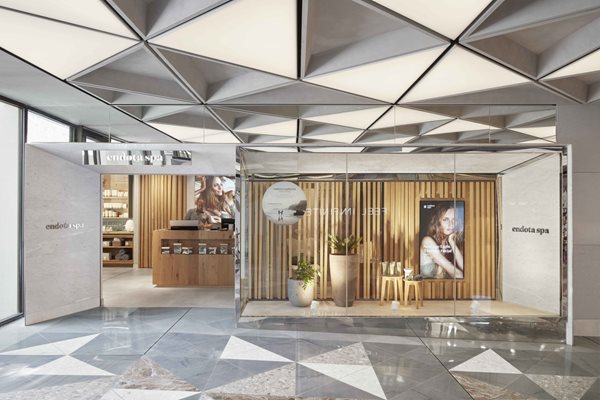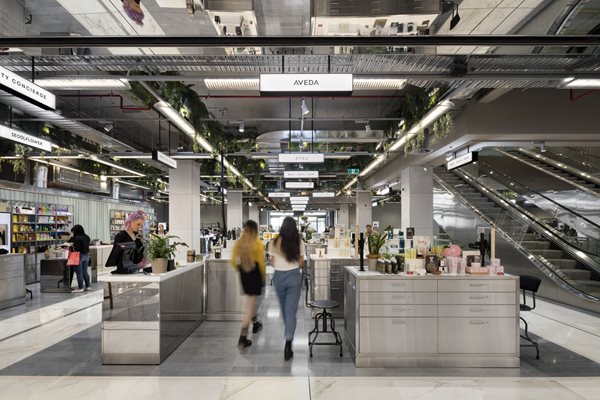Monaro Mall is the first fully enclosed, air-conditioned shopping mall in Australia, and is still a part of the primary retail precinct in Canberra.
The redeveloped precinct has been reimagined as the beauty and lifestyle destination in Canberra, with its uniform shop frontages taking influence from existing luxury retail precincts such as the Queen Victoria Building and the Strand Arcade, both located in Sydney.

Celebrating the history of Monaro Mall, the approach to this project was to look back at the city’s post-war modernist influences to inform the new design, reinterpreting them in a contemporary, yet timeless manner. Most prominently, iconic arched awnings have been reinstated with reflective gold soffits and uplighting adding a new sense of luxury.
Originally opened in 1963, it has been much loved and was significant in the development of Canberra. The mall had undergone many changes from its initial built form with little internally remaining. However although the scope of the project was significant, the existing building structure was intentionally retained and the facades of marble and mosaic tile carefully restored.
As the nature of retail continues to transform, there is a need to redefine the traditional shopping mall as a civic space, a destination that merges the commercial and the cultural. With iterative market testing and close client collaboration, a mix of retail typologies were explored. An important focus has been on experience, creating distinct precincts that can be uniquely branded and accommodate regular themed events.

Street focussed retail with consistent hamper signs and large format shopfront windows and doors with bronze frames form a cohesive streetscape that reactivates the external public realm. A new double height entry to Petrie Plaza with proportions of civic generosity has been carved out of the building. The internal layout has been reconfigured and the arcades have been straightened and aligned for more successful flow, vertical circulation and mid-block connections.

Arcades are of two scales – the arcade on level one is wider with kiosks and dramatic voids and skylights, while the arcade on the ground floor is more intimate with a feature coffered ceiling. Stone portals and display cases that can be varied in dimension to suit tenant requirements provide visual uniformity and create focus around each open shopfront.
The Beauty Garden has been developed on a market typology, where small format tenancies can have short-term leases to encourage new businesses and allow for changing tenancy mixes as the precinct evolves. Modular stainless steel joinery was designed to make change easy and give coherency to the precinct.
With the challenge of urgency in timeframes, documentation was completed simultaneously with the construction and integration of regular changes responding to evolving retail positioning and market needs.
The project is a substantial investment in the city. While attentive to the importance of business viability in build cost vs rent acquired over the long term, the project makes a significant civic contribution, setting a new benchmark for quality and attention to detail, and demonstrating the potential for private leadership in heritage custodianship and city revitalisation.

